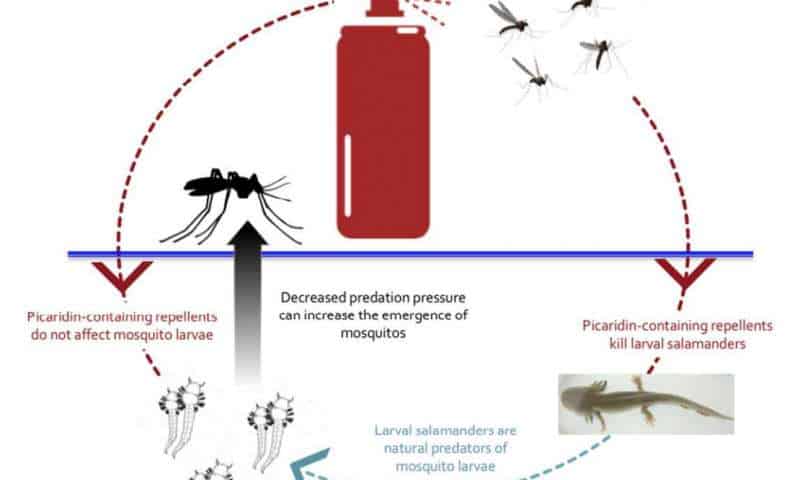A new study reports that picaridin, a broadly-used and efficient substance to repel mosquitoes and ticks, can also be lethal to salamanders.

We all hate nasty insects — not only are they annoying and painful, but sometimes they can carry dangerous diseases. This is why insect repellants have become so popular recently: they’re effective at keeping insects at bay. However, creatures other than insects might be caught in the crossfire. A new study reports that two common insect repellants can also affect the larvae of salamanders.
This is doubly unfortunate because salamanders themselves provide a natural pest control against insects — particularly during the larval stage when they prey on mosquito larvae. Emma Rosi, a freshwater ecologist at Cary Institute of Ecosystem Studies and a co-author on the paper, explains:
“Use of insect repellents is on the rise globally. Chemicals in repellents enter aquatic ecosystems through sewage effluent and are now common in surface waters. We set out to understand the impact of repellent pollution on both larval mosquitoes and the larval salamanders that prey on them.”
The research team analyzed the effect of the two most widely insect repellents (DEET and picaridin) on larval salamanders and mosquitoes. In a lab, they exposed mosquito larvae and just-hatched spotted salamander larvae to three environmentally relevant concentrations of these chemicals, as well as a control treatment.
“The concentrations in our experiments are conservative; we prepared them based on unadulterated commercial formulations, not concentrations of pure active compounds,” Rosi explains.
Remarkably, the mosquito larvae were not affected — they grew up and matured normally. But things were very different for the salamanders. After four days of exposure, salamanders in all groups began to display signs of impaired development such as tail deformities, and after 25 days, 45-65% of picaridin-exposed salamander larvae died.
The speed through which the damage was done is also surprising, says co-author Barbara Han, a disease ecologist at Cary Institute;
“The expediency of salamander mortality was disconcerting. When studying the effects of a chemical on an amphibian, we usually look for a suite of abnormalities. We couldn’t collect these data because the salamanders died so quickly.”
The key issue here, however, is the toxicity level. Yet as the researchers emphasized, the doses they used were conservative — significantly lower than what you would typically expect during peak season. Rafael Almeida, a postdoctoral researcher at Cornell University, says this could have dramatic effects in the long run.
“The amount of repellents entering waterways peaks seasonally. If amphibians are exposed during a sensitive life stage, entire cohorts could perish. The population would not have a chance to recover until the following year. Meanwhile, mosquitoes would continue to reproduce. It suggests a negative feedback loop.”
The study has been published in Biology Letters.



